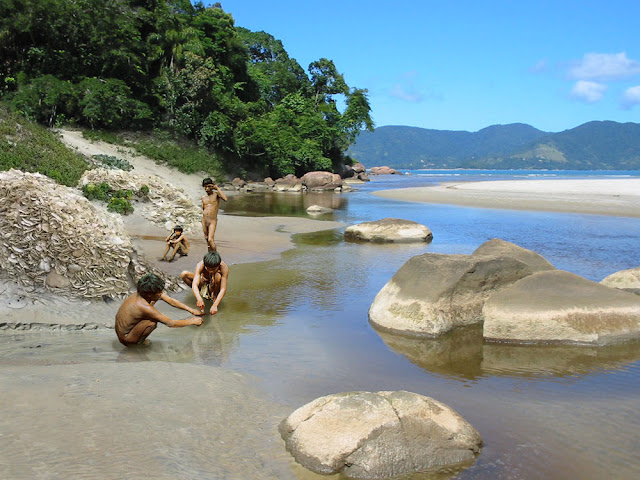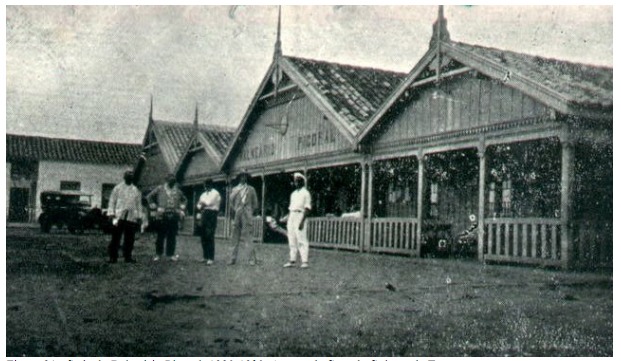Linha do Tempo
Conheça um pouco da história do nosso município.
Galeria Histórica
Linha do Tempo

Triássico

Jurássico

Caçadores, Coletores, Pescadores Pré-Históricos (Homem do Sambaqui)

Comunidades Indígenas

Ilha da Baya

Jesuítas no litoral
“Vazio Humano”
Ciclo da Prata e do Ouro
RECONHECIMENTO DA COSTA E NAVEGAÇÃO LACUSTRE

Cerca de Pregos
Tratado de Madri
Guarda e registro
Forte São Diogo das Torres
Presença Açoriana

Casa nº 1

Revolução Federalista

O Primeiro Farol de Torres

Descoberta” da “Balneoterapia
Era Pacheco
Primeiro Acidente Aéreo

O Balneário Picoral

O Balneário Picoral
Fundação da SAPT

Primeira sede da SAPT

Criação do Parque Estadual da Guarita

Nova Ponte Pênsil
Prefeitos de Torres
Intendente 1935 a 1940
01/01/1952 a 31/12/1955
01/12/1948 a 31/12/1951
01/01/1956 a 31/12/1985
01/01/1959 a 30/01/1964
31/01/1964 a 30/01/1969
31/01/1969 a 30/01/1973
31/01/1973 a 30/01/1977
01/01/1984 a 31/12/1988
01/01/1993 a 31/12/1996
31/01/1977 a 24/05/1981
25/05/1981 a 31/01/1983
01/01/1989 a 08/09/1990
08/08/1990 a 31/12/1992
01/01/1997 a 31/12/2000
01/01/2001 a 31/12/2004
01/01/2005 a 31/12/2008
01/01/2009 a 31/12/2012
01/01/2013 a 31/12/2016
01/01/2017 - Atual
História do Balonismo em Torres
TORRES: O MUNICÍPIO QUE SE TORNOU PROTAGONISTA DO BALONISMO NO BRASIL
HISTÓRICO:
Em 1989 surgiu a ideia de trazer alguns balões para a abertura do Festival da Banana a FEBANANA e foi um sucesso.
Em outubro de 1989 foi organizado o I Festival Sulbrasileiro de Balonismo que teve a participação de dez balões, mas as condições climáticas não foram favoráveis e impediram algumas provas.
A segunda edição em 1990 foi transferida para o mês de abril, mês com ótimas condições climáticas para os voos. Com quinze balões e centenas de pessoas prestigiando o evento, o mês de abril passou a ser o mês oficial do festival até os dias de hoje.
Em 1992, foi o primeiro ano em que se conseguiu finalizar a prova do mastro, tendo como campeão da prova e também do festival, Leonel Brites.
Em 1993, Lincoln Freire realizou o voo pendurado no balão em formato de uma latinha de cerveja Skol, fato este inédito na América do Sul até então.
Em 1995, aconteceu um casamento dentro de um balão semi-inflado, o balonista Eduardo Mello e sua noiva Patrícia optaram em realizar a união conjugal durante o evento.
Eduardo Mello foi o primeiro balconista de Torres e como pioneiro incentivou muitos a se qualificarem e se formarem pilotos. A economia do balão começou a movimentar a cidade e as empresas descobriram aí uma excelente ferramenta de Marketing. Em alguns anos eram colocadas faixas com os nomes das empresas, mas logo as empresas locais já tinham seus próprios balões e as equipes de pilotos começaram a se multiplicar.
Torres teve a primeira mulher balconista, Laís Pinho que tem divulgado a cidade a nível nacional com sua criatividade e dedicação ao esporte e também por construir o primeiro balão 100% produzido em Torres, uma vez que eram feitos em São Paulo.
IMPACTOS SOCIOCULTURAIS:
Trata-se de um evento que se tornou parte da cultura de Torres, significando muito para o imaginário coletivo. O evento mobiliza a cidade e a região não apenas durante a sua realização mas o ano todo.
Acontecem paralelamente Feiras de exposições de produtos regionais, festividades com apresentações de danças, música, poesia, literatura e ouras manifestações culturais como uma forma de valorização da arte e da cultura populares.
Os eventos costumam atrair grande público que aprecia os show de artistas locais e nacionais.
Atividades esportivas costumam acontecer de forma paralela ao evento como Motocross, paraquedismo, voos de helicóptero, esportes náuticos e aéreos mobilizando e atraindo visitantes e turistas de diferentes destinos nacionais e internacionais.
IMPACTOS ECONÔMICOS:
Em Torres o Festival de Balonismo movimenta o setor hoteleiro, a gastronomia, o comércio e toda a economia local que ainda sofre muito com os efeitos da Sazonalidade. O período de alta temporada tem ficado cada vez menor, gerando uma baixa temporada com consequências difíceis para o município que foram agravados por quase dois anos de pandemia.
O evento é fonte de renda, emprego e oportunidades para empresas e empreendedores que participam de forma organizada, exercitando a arte de bem receber que já faz parte da característica de Hospitalidade.
INVESTIMENTOS DA PREFEITURA:
Nas primeiras edições do evento, as estruturas eram alugadas, inclusive banheiros e outras instalações necessárias. Em 1999, por exemplo, devido às chuvas não houve provas de balonismo e o evento ficou muito prejudicado em virtude do barro que se formava no Parque do Balonismo.
Atualmente, o Parque do Balonismo oferece conforto e segurança aos visitantes. A moderna estrutura construída possui banheiros 24 banheiros, um memorial do Balonismo e espaço de cozinha e estrutura para um Centro de Atendimento ao Turista que possui uma agência de Turismo Receptivo que venceu a licitação para concessão deste espaço e atende turistas e visitantes comercializando Produtos Turísticos e pacotes de serviços e experiências ligadas ao Turismo.
TÍTULO CONQUISTADO:
Torres tornou-se referência nacional e internacional, recebendo o signo popular de Capital Brasileira do Balonismo.
HISTÓRICO: DATAS DOS EVENTOS E PILOTOS VENCEDORES
1º Festival Sulbrasileiro de Balonismo, De 7 a 9 de outubro de 1989 – Campeão: Orlando Genicolo Filho.
2º Festival de Balonismo, De 28 de abril a 1 de maio de 1990 – Campeão: Carlos Antônio Paulo “Chico Paulo”.
3º Festival de Balonismo, De 28 a 31 de março de 1991 – Campeão: Miguel Leiva.
4º Festival Kodak/Skol de Balonismo, De 30 de abril a 3 de maio de 1992 – Campeão: Leonel Brites e Campeão Prova do Mastro: Leonel Brites.
5º Festival de Balonismo, De 29 de abril a 02 de maio de 1993 – Campeão: Antonio Carlos Hays Marques “Caco”.
6º Festival de Balonismo, De 21 a 24 de abril de 1994 – Campeão: Walterson Leite Lima.
7º Festival Kaiser de Balonismo, De 13 a 16 de abril de 1995 – Campeão: Ademir Brolacci.
8º Festival Kaiser de Balonismo, De 04 a 07 de abril de 1996 – Campeão: Aquilino Gimenez.
9º Festival Kaiser de Balonismo, De 18 a 21 de abril de 1997 – Campeão: Luis Eduardo Consiglio.
10º Festival de Balonismo, De 30 de abril a 04 de maio de 1998 – Campeão: Rui Kalousdian.
11º Festival de Balonismo, De 1 a 4 de abril de 1999 – Não houve prova devido à chuva.
12º Festival Internacional de Balonismo, De 28 de abril a 1 de maio de 2000 – Campeão: Fábio Passos.
13º Festival Internacional de Balonismo, De 27 de abril a 1 de maio de 2001 – Campeão: Sacha Haim.
14º Festival Internacional de Balonismo – Copa Mercosul, De 30 de abril a 5 de maio de 2002 – Bicampeão: Sacha Haim – Campeão da prova da chave (pegou a chave de uma moto na prova do mastro).
15° Festival Internacional de Balonismo, De 18 a 21 de abril de 2003 – Tricampeão: Sacha Haim.
16° Festival Internacional de Balonismo, De 8 a 11 de abril de 2004 – Tetracampeão: Sacha Haim.
17° Festival Internacional de Balonismo, De 21 a 24 de abril de 2005 – Pentacampeão: Sacha Haim.
18° Festival Internacional de Balonismo, De 27 de abril a 1 de maio de 2006 – Campeã: Gabriela Slavec.
19° Festival Internacional de Balonismo, De 27 de abril a 1 de maio de 2007 – Campeão: Eduardo Melo.
20º Festival Internacional de Balonismo, De 18 de abril a 21 de abril de 2008 – Campeão: Kaio Chemin.
21º Festival Internacional de Balonismo, De 17 de abril a 21 de abril de 2009 – Hexacampeão: Sacha Haim.
22º Festival Internacional de Balonismo, De 29 de abril a 2 de maio de 2010 – Campeão: Guto Marques.
23º Festival Internacional de Balonismo, De 20 de abril a 24 de abril de 2011 – Heptacampeão: Sacha Haim.
24º Festival Internacional de Balonismo, De 27 de abril a 1 de maio de 2012 – Octacampeão: Sacha Haim.
25º Festival Internacional de Balonismo, De 1 a 5 de maio de 2013 – Campeão: Alexandre Giglio.
26º Festival Internacional de Balonismo, De 30 de abril a 4 de maio de 2014 – Campeão: Filipe Tostes.
27º Festival Internacional de Balonismo, De 30 de abril a 3 de maio de 2015 – Campeão: Warley Macedo.
28º Festival Internacional de Balonismo, De 20 de abril a 24 de abril de 2016 – Campeão: Warley Macedo.
29º Festival Internacional de Balonismo, De 28 de abril a 1 de maio de 2017 – Campeão: Fábio Passos – Campeão da prova da chave: Fábio Passos.
30º Festival Internacional de Balonismo, De 27 de abril a 1 de maio de 2018 – Campeão: Murilo Gonçalves.
31º Festival Internacional de Balonismo, De 1 a 5 de maio de 2019 – Campeão: Murilo Hoffmann.
32º Festival Internacional de Balonismo acontecerá de 14 a 24 de abril de 2022.
OBS: Devido à Pandemia do Corona Vírus, em 2020 e 2021 não houve Festival de Balonismo.
O BALONISMO COMO ESPORTE
Segundo a Federação Aeronáutica Internacional, o balonismo é o esporte aéreo mais seguro do mundo há mais de vinte anos, em função de o balão ser constituído por um material feito com tecnologia espacial aplicada a aeronáutica.
Por ser um esporte seguro, não exige o uso de paraquedas.
A segurança do balão começa pelo material com o qual é feito, passando pela resistência de seus componentes como o envelope, cordame, cesto, maçarico, botijão de gás, que são fabricados para suportar nove vezes a exigência normal, além de se ter um limite de segurança quanto a velocidade dos ventos para poder se decolar um balão. As velocidades são de até 25 km/h, e para balões em formatos especiais o limite do vento é de 15 km/h.
O envelope do balão é feito com o tecido nylon. Este tecido recebe um tratamento especial contra a propagação do fogo. Os cordames são de kevlar, um material que não queima, não conduz eletricidade, não apodrece e cada um deles, com a espessura de um cordão de sapato, suporta 600 quilos de peso.
Para fazer o Balão subir, aciona-se o maçarico que, por sua vez, aquece o ar. O voo dos balões é controlado através do maçarico que ligando e desligando, o piloto pode controlar com precisão a altitude. Mas quem define a direção a tomar não é o piloto e sim o vento que nas diferentes alturas das diversas correntes, define o rumo dos Balões.
REFERÊNCIAS:
https://pt.wikipedia.org/wiki/Festival_Internacional_de_Balonismo_de_Torres
Telefones
Transparência
Informações
- Horários de atendimento:
Segundas, Quartas e Sextas-Feiras:
das 8h às 11h30
das 13h às 17h30Terças e Quintas:
das 13h às 17h30 -
R. José Antônio Picoral, 79
Centro
CEP: 95560-000

